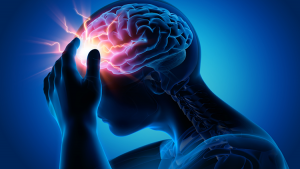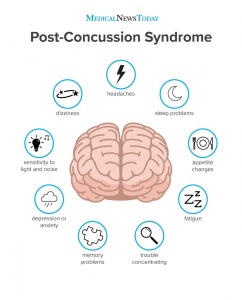
Story Time:
I have never experienced a concussion, nor have I ever seen someone I’m close to get a concussion. This statement would’ve been true a year ago, but I can no longer say this is the case. This past March, one of my best friends got a concussion and it was an event I will never forget. I was at this friend’s house, hanging out with her roommates and mine while we waited for her to get off of work. She had been snapchatting us throughout the evening, telling us about the drama going down at work. She had told us that she got hit in the head amidst the drama, but she wasn’t feeling anything more than a headache. She arrived at her apartment 20 minutes later, greeting us but excusing herself to her room to lay down. Almost two hours later, my friend came out of her room, tears streaming down her face as she held a hand to her head. She looked at my roommate and I and asked, “when did you guys get here?” Immediately, our concern skyrocketed. We replied that we had been there since nine o’clock, and she had greeted us when she came in the door. She then proceeded to ask, “how did I get home?” My roommate and I looked at each other, mutually deciding that we needed to take our friend to the emergency room. We continued to ask our confused friend questions about what day it was, what she remembered, and how she was feeling as we prepared her to go. We helped her get her coat on and grabbed her ID before taking her down to the car. I gave my friend a blanket that she could use to block out the lights, and we were on our way to the emergency room.
Upon arrival to the emergency room, I knew my friend’s condition had worsened. My friend was squinting at the light as we stepped out of the car. She was very unsteady as we walked to the front doors of the emergency room—I was essentially holding her up, at this point. At this time, COVID was still a severe problem, so they were not allowing people other than the patient into the ER. However, the person at the COVID checkpoint saw the pair of us and said nothing as I walked my friend to registration. I told my friend to close her eyes as I checked her in, as she couldn’t even remember her birth date. I went to the front desk and told her who my friend was, what had happened, and gave her my friend’s photo ID. A nurse came out with a wheelchair just a few minutes later, and the two of us got my friend seated in the wheelchair. The nurse took my friend to the back, while I waited in my car in the parking lot. My roommate and I were waiting for our friend at the emergency room until 3:00 am.
Post-Concussion Thoughts:
Whenever I thought about concussions prior to the incident with my friend, I imagined how much it would hurt to be hit that hard in the head, but I never thought about the actual injury itself. I never thought about the memory loss, the confusion, the photophobia, or the loss of balance one may experience after the event. It wasn’t until I witnessed it with my friend that I began to think about all of the conditions associated with concussion. Figure 2 shows a more complete list of concussion symptoms, but I will focus on only a few.

I also have never thought about the biological causes behind these conditions. The migraines, light sensitivity, and sound sensitivity can all be attributed to the ion flux that occurs following a concussion.[1] Ion flux is the movement of ions into and out of the cell. This flux occurs because a concussion makes little holes in the plasma membrane, which allows calcium and sodium to move into the cell and potassium to move out of the cell.1 A good model for this idea is the sharing of a twin bed. If one person is in the bed, and another joins, the original person is likely to leave (unless they fight for it, but let’s imagine this occurs in a perfect utopian society). This movement of ions can cause depolarization of the membrane, leading to excess release of glutamate.1 The impaired cognition, slowed reaction times, and slowed processing often seen post-TBI are attributed to impaired neurotransmission and axonal dysfunction.1 Impaired neurotransmission is an imbalance in the release of excitatory and inhibitory neurotransmitters. There are more excitatory neurotransmitters (action-inducing chemicals) binding to receptors than inhibitory neurotransmitters (action-inhibiting chemicals).1 The axonal injury is the stretching of the axons of neurons.1 Like a hair tie that you’ve used one-too many times, the axon stretches out and weakens as a result of the trauma to the brain. All of these things were going on in my friend’s brain, lasting months after her injury. You don’t really think about any of these severe effects from a concussion until you are a witness to it. I will remember this event forever, and I am glad that I am able to connect my friend’s symptoms to biological events going on within her brain.
[1] https://moodle.cord.edu/pluginfile.php/1052900/mod_resource/content/3/2014%20The_New_Neurometabolic_Cascade_of_Concussion.3.pdf